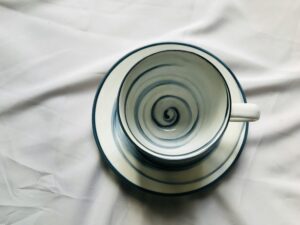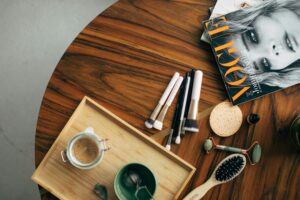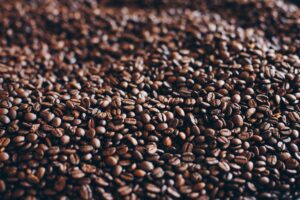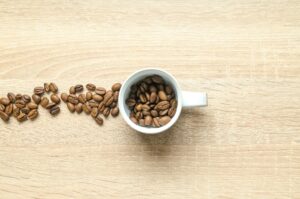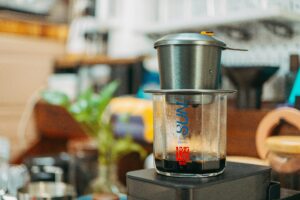Table of Contents
Introduction: The Rise of At-Home Baristas in 2025
In 2025, the art of brewing coffee at home has reached new heights. With access to premium beans, intelligent brewing gear, and an ever-growing community of coffee lovers, more people than ever are stepping into the role of home barista. But making a café-quality cup at home requires more than a good coffee machine—it demands understanding, practice, and passion.
Whether you’re aiming to save money, elevate your daily brew, or embrace the meditative experience of a slow morning ritual, this guide will walk you through every step of becoming your own barista. From bean selection to brewing techniques, and from gear essentials to pro-level tips, here’s how to consistently brew coffee that rivals the best cafés.
Why Brewing Like a Barista Matters
1. Control Over Quality
When you brew coffee yourself, you control every variable: the bean origin, roast level, water temperature, brew time, and grind size. This level of control allows you to tailor each cup to your exact preferences.
2. Cost-Effective in the Long Run
While specialty cafés offer excellent coffee, daily visits can add up. Investing in the right equipment and learning the craft of brewing lets you enjoy similar (or better) results for a fraction of the cost over time.
3. Sustainability and Mindfulness
Brewing at home allows you to reduce waste, choose eco-friendly equipment, and support ethical coffee producers. It’s also a great way to slow down and savor the moment, transforming a mundane habit into a meaningful ritual.
Step 1: Understanding Coffee Brewing Variables
Professional baristas don’t guess—they measure. To replicate professional results, you must understand the core variables that influence flavor and aroma.
Coffee-to-Water Ratio
This determines strength. The golden standard is a 1:16 ratio—1 gram of coffee to 16 grams of water. Some baristas prefer 1:15 or 1:17 depending on the bean and method.
Water Temperature
Ideal brewing occurs between 195°F and 205°F (90°C to 96°C). Anything hotter risks over-extraction (bitter), while cooler temperatures under-extract (sour).
Extraction Time
Different methods require different brew times:
- Espresso: 25–30 seconds
- Pour-over: 2.5–4 minutes
- French Press: 4–5 minutes
- Cold Brew: 12–24 hours
Grind Size
The right grind is essential:
- Extra Fine: Turkish
- Fine: Espresso
- Medium: Drip and pour-over
- Medium-Coarse: Chemex
- Coarse: French press
Inconsistent grinds will lead to over- and under-extracted flavors in the same cup.
Step 2: Barista-Approved Tools for Brewing
No professional works without their tools. Here’s what you need to mirror café-level coffee at home.
1. High-Quality Burr Grinder
Consistent grind size is critical. A conical burr grinder delivers uniform particles for precise extraction.
Top Pick (2025): Fellow Ode Brew Grinder Gen 2 – Known for quiet operation and precision control.
2. Digital Scale with Timer
Precision matters. Measuring by weight ensures accuracy and consistency.
Recommended Features:
- 0.1g accuracy
- Built-in timer
- Waterproof platform
3. Gooseneck Kettle
Water flow control is key for pour-over methods.
Top Pick: Fellow Stagg EKG – Offers variable temperature settings, fast heating, and balanced pouring.
4. Brewing Equipment
Choose your method:
- Drip Coffee Maker (Smart): Ratio Six, Moccamaster
- Espresso Machine: Breville Barista Express Impress, Rancilio Silvia Pro X
- Pour-Over: Hario V60, Kalita Wave
- French Press: Espro Press P7
- AeroPress: Compact, travel-friendly
- Cold Brew System: OXO Good Grips Cold Brew Maker
5. Water Filter
Use filtered or bottled spring water. Water with high chlorine or heavy minerals compromises flavor.
6. Milk Frother/Steam Wand
For lattes and cappuccinos, proper milk frothing is essential. An electric frother or integrated steam wand will do the trick.
Step 3: Choosing the Right Coffee Beans
Freshness is Key
Buy whole beans roasted within the last two to three weeks. Always grind just before brewing.
Roast Level Matters
- Light Roast: Best for pour-over and Chemex; preserves origin characteristics.
- Medium Roast: Balanced and versatile.
- Dark Roast: Bold and rich; great for espresso and French press.
Origin and Processing
Explore beans from different regions (Ethiopia, Colombia, Guatemala) and processing methods (washed, honey, natural) for variety.
Top Roasters in 2025:
- Stumptown Coffee Roasters
- Verve Coffee
- Onyx Coffee Lab
- Heart Roasters
- Counter Culture Coffee
Step 4: Brewing Methods Explained
Pour-Over (e.g., Hario V60)
Why It’s Great: Control, clarity of flavor, minimal bitterness
Recipe:
- 18g coffee (medium-fine)
- 300ml water at 200°F
- Brew time: 3 minutes
Steps:
- Rinse filter and preheat vessel.
- Add grounds and bloom with 40ml water for 30 seconds.
- Slowly pour remaining water in concentric circles.
- Swirl, serve, enjoy.
French Press
Why It’s Great: Full-bodied, low acidity, ideal for dark roasts
Recipe:
- 30g coffee (coarse)
- 500ml water
- Brew time: 4–5 minutes
Steps:
- Add grounds to press.
- Pour hot water, stir.
- Cover and steep.
- Press slowly and serve.
Espresso
Why It’s Great: Intense flavor, espresso-based drinks (lattes, cappuccinos)
Recipe:
- 18g coffee (fine grind)
- 36g espresso yield
- Brew time: 25–30 seconds
Steps:
- Distribute and tamp evenly.
- Pull shot and watch the crema.
- Adjust grind based on flow time.
Step 5: Mastering Milk Frothing
A silky, textured milk finish transforms espresso into a luxurious latte.
Technique:
- Use cold milk (whole milk gives best texture).
- Submerge steam wand just below the surface to aerate.
- Then lower wand to heat milk to 150°F while swirling.
- Tap and swirl to eliminate bubbles.
Common Mistake: Overheating milk. Scalded milk loses sweetness and texture.
Step 6: Practice Makes Perfect
Keep a Brew Log:
- Roast date
- Coffee-to-water ratio
- Brew time
- Grind size
- Taste notes
Tracking changes helps you fine-tune and achieve consistency.
Join Coffee Communities:
Explore Reddit’s r/Coffee, YouTube tutorials, and Discord communities to stay updated and learn from other home brewers.
Troubleshooting Common Issues
| Problem | Likely Cause | Solution |
| Bitter coffee | Over-extraction, water too hot | Use coarser grind, lower temperature |
| Sour coffee | Under-extraction, grind too coarse | Use finer grind, increase brew time |
| Weak flavor | Too little coffee, incorrect ratio | Use proper scale and adjust ratio |
| Uneven taste | Inconsistent grind, uneven pour | Use a burr grinder and steady pour |
| No crema (espresso) | Stale beans or low pressure machine | Use fresh beans and proper tamping |
Bonus: Cold Brew & Iced Coffee Tips
Cold Brew Basics:
- 1:8 ratio (coarse grind)
- Steep for 12–24 hours
- Strain, chill, and dilute if needed
Pro Tip: Use a dark roast or blend for a richer iced flavor.
Final Thoughts
In 2025, brewing exceptional coffee at home isn’t reserved for professionals. With the right knowledge, a few essential tools, and a bit of practice, you can brew with confidence and creativity. Whether your go-to method is a refined pour-over or a strong French press, the journey to becoming a home barista is a rewarding one.
Remember, great coffee isn’t just about taste—it’s about experience. Mastering the art of home brewing brings a deeper appreciation for each cup, turning your kitchen into your favorite café.
FAQs
Q: Can I get café-quality coffee at home without an espresso machine?
A: Yes. Methods like AeroPress, Moka pot, or pour-over can create rich, flavorful coffee without high-end equipment.
Q: How often should I clean my coffee equipment?
A: Clean your brewer and grinder weekly, and deep clean espresso machines monthly to prevent buildup.
Q: What milk is best for frothing?
A: Whole milk produces the creamiest foam, but barista versions of oat and almond milk are also good options.
Q: Why is filtered water important?
A: Tap water can carry chlorine and minerals that affect flavor. Filtered water improves clarity and consistency.
Q: What’s the biggest mistake new home brewers make?
A: Ignoring grind size and using pre-ground coffee. Fresh grinding and adjusting size per method are critical.

